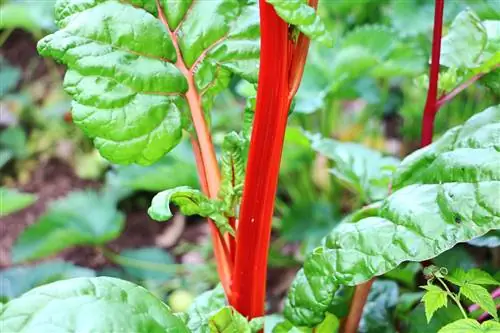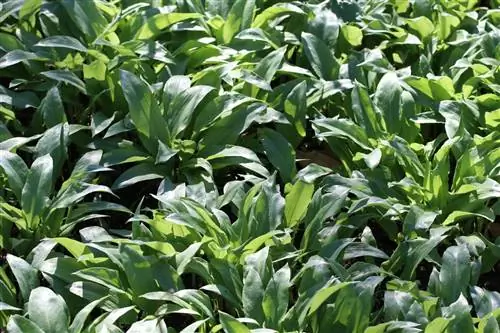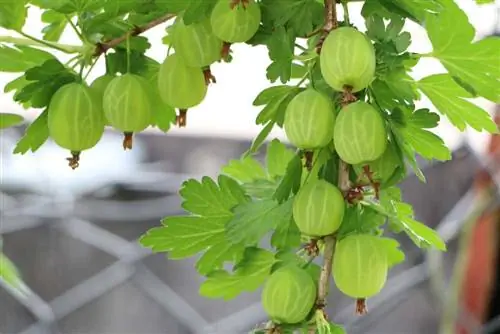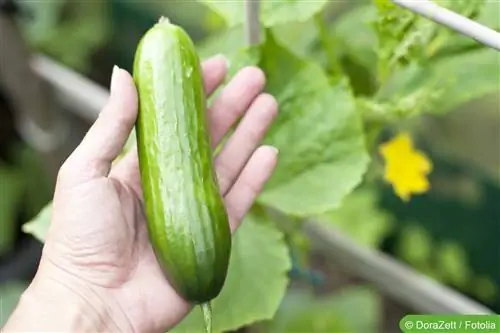- Author admin [email protected].
- Public 2023-12-17 03:39.
- Last modified 2025-01-24 12:45.
Many hobby gardeners associate spring with the enjoyment of sweet and sour rhubarb sticks. This period is limited for most varieties. The harvesting technology, on the other hand, influences the yield in the coming harvest season.
Harvest time
After you have planted rhubarb in your garden, the plant needs time to grow and thrive. The harvest takes place in the second year and extends over a comparatively short period of time. Weather and climatic region play an important role, so that the range of harvest dates can be wider or narrower. In warm environments, harvesting occurs earlier than in the harsh north. Ideally, the perennials were able to enjoy a few days of sunshine before the leaves were cut off, because the plants use solar energy to build sugar. These times are for your guidance:
- You can harvest rhubarb leaves between the end of March and the beginning of April
- The harvest usually takes place in May
- traditionally the harvest season ends on St. John's Day, June 24th
Avoid late harvest
Even if additional leaves with juicy stems grow after the last recommended harvest date in summer, you should no longer harvest them. As the season progresses, the perennials develop more and more oxalic acid, which is stored in the leaf stems. Excessive amounts have negative effects on the absorption of nutrients in the body. The perennial also needs the opportunity to regenerate when a second growth spurt occurs at the end of June. This means that the rhubarb will sprout at full strength next year and will once again produce a bountiful harvest.
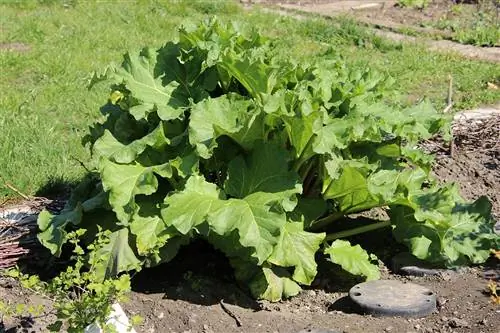
Exceptions
There are now varieties that are no longer compatible with the generally valid harvest dates. Basically, rhubarb varieties are divided into three groups based on the color of the petioles:
Group 1
- green-stemmed varieties with green flesh
- high crop yield
- relatively sour in taste
Group 2
- Crosses with red stems and green tissue
- slightly milder tasting
Group 3
- completely red colored plant tissue
- particularly delicate taste
Note:
Green flesh tends to contain more oxalic acid than red-fleshed petioles. Therefore, you should stick to the rough recommendations for harvesting rhubarb for green-stemmed varieties.
The harvest period is so different:
- ‘Goliath’ (Group 1) should only be harvested from April to mid-June
- ‘Gigant’ (Group 1) ends the harvest season at the end of May
- 'Livingstone' (Group 2) is ready to harvest in its first year and is harvested from March to October
- 'Champagne' (Group 2) is considered an early maturing cultivar with a wider harvest window between May and early July
- 'Frambozen Rood' (Group 2) medium late variety that produces edible petioles from April or May to the end of June
- 'Timperley Early' (Group 3) with winter protection enables a harvest from February to the end of the harvest season
Note:
If your variety is an autumn rhubarb, you can harvest it until October. The so-called raspberry or strawberry rhubarb can usually be used until the end of June because of the red flesh.
Detecting maturity level
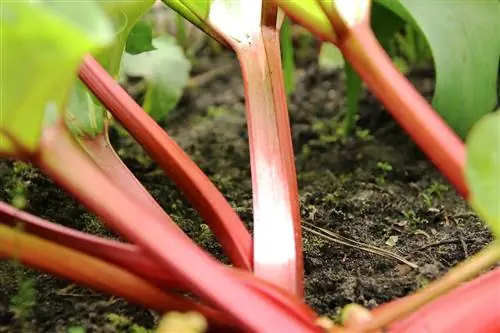
Regardless of the rhubarb variety, the ideal harvest time can be determined based on a few characteristics:
- fresh color and thick and juicy appearance of the stems
- smooth tissue between the leaf veins
- entire perennial stands upright
- no noticeable deficiency symptoms nor signs of drought stress
The older the leaves get, the more woody the plant tissue becomes. You'll notice this when cutting, because the fibers are harder to cut.
Tip:
You can use the young petioles as soon as the leaf surface has unfolded. However, the taste will become more aromatic if you wait a certain amount of time.
Harvest correctly
So that you don't put unnecessary stress on the crop, you should proceed carefully and carefully when harvesting rhubarb. It needs sufficient reserves in the form of leaf mass so that it can continue to grow. It is gentler on the plant if you do not cut the leaves with a knife, but rather harvest them by hand. Cuts provide entry points for mold and pathogens. The flowering period of rhubarb begins in May. To increase crop yield, you should break off the flower spikes before they bloom. Particularly strong specimens may keep one inflorescence as an ornament. How to proceed when harvesting:
- Grip rhubarb stalks at the base and twist out clockwise
- do not harvest more than half of all leaves at once
- ideally leave two thirds of the plant standing
Note:
The leaf surface is not suitable for consumption due to the high oxalic acid content. Cut these off as well as the white stalk at the bottom of the stem and only use the rhubarb stalks.

